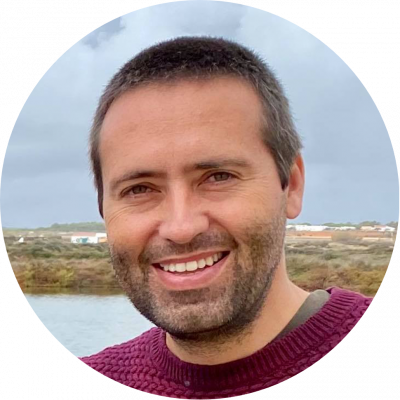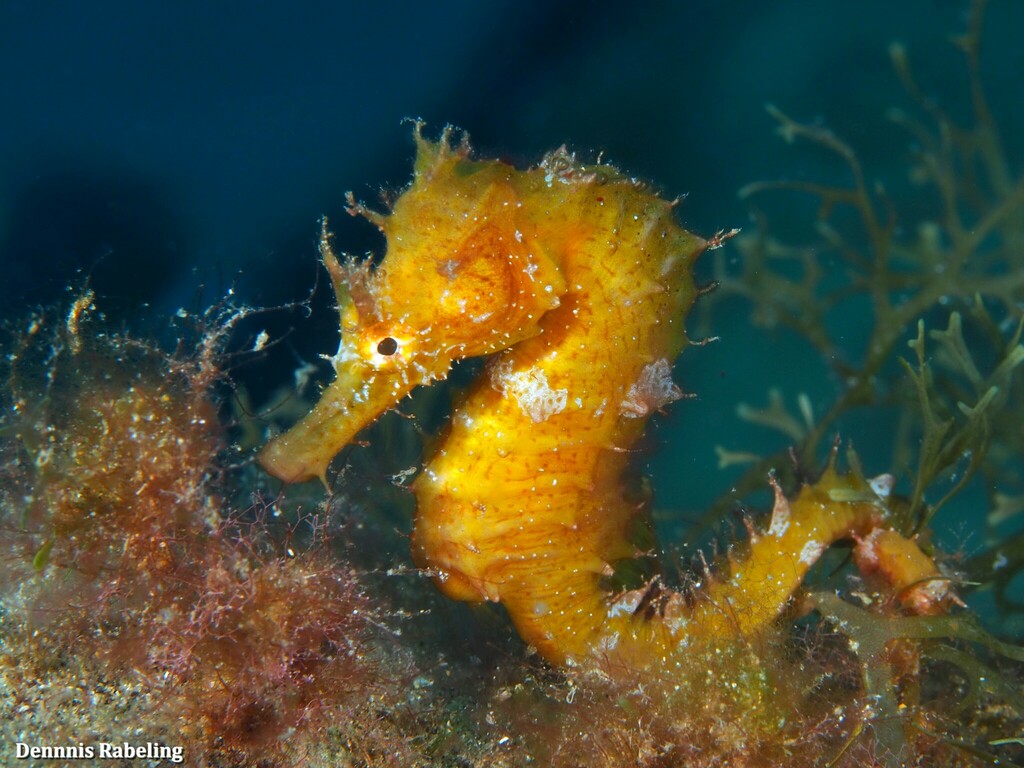 |
Research AssociateProject Seahorse Research UnitProject Seahorse DegreesBSc. in Marine Biology from University of Algarve, Portugal |
Biography
Since 2007, I have participated actively in a captive breeding program of the two European seahorse species, as well as other syngnathid species. The knowledge acquired in the last decade allowed to create a robust and solid breeding and maintenance protocol of seahorses in captivity.
During my PhD, I studied the impact of environmental variables on seahorse abundance, distribution, and habitat, developed less invasive methods (photo identification) to better study seahorses in the wild, and designed habitat restoration tools (artificial holdfast) to propose mitigation actions for habitat loss and degradation.
Since the completion of my PhD, I participated in many research multidisciplinary projects, both as PI and researcher, with thematic that ranged from aquaculture, ecology, population dynamics, socio-economy, and effects of climate change on marine species. I have been working with relevant stakeholders to expand the current knowledge of seahorse distribution, such as dive centers, maritime tourism companies and fishermen communities, while promoting best practices and Blue Economy. I also have acted as scientific advisor for policy makers which ultimately resulted in the implementation of marine protected areas (MPA) to act as sanctuaries for seahorses, and the legal classification of syngnathids as protected species on a national level.
I am a member of the IUCN Seahorse, Pipefish and Stickleback Specialist Group, acting as Focal point for Europe, which provides support for IUCN Red Listing assessments namely, to reassess the current status of Data Deficient for the European seahorse species. This group has highly skilled syngnathid specialists that provide support in planning conservation actions and allow access to decision makers and relevant stakeholders that are responsible for implementing these actions.
Research Interests
Miguel has studied several aspects of European seahorse biology, ecology and conservation. He holds a PhD in Marine Ecology from the University of Algarve (Portugal), where he studied seahorse ecology, specializing in in situ population assessment. He developed a successful breeding program in captivity for both European seahorse species. Miguel has worked closely with stakeholders to implement mitigation tools for seahorse conservation and was actively involved in the creation of new marine protected areas (MPAs). He also acts as Focal Point for Europe in the IUCN Seahorse, Pipefish and Seadragon Specialist Group.
Contact Information
Institute for the Oceans and Fisheries, The University of British Columbia
AERL, 2202 Main Mall, V6T 1Z4
Vancouver, British Columbia
Email: m.correia@oceans.ubc.ca
Website: Project Seahorse
Social Media
Twitter: @MiguelJTCorreia
Selected Publications
Kalisiak, J., Gray, I., Bruget, R. & Correia, M. (2022). The use of non-invasive sampling to estimate long-term abundance of Hippocampus kuda in the Koh Sdach Archipelago, Cambodia. Cambodian Journal of Natural History 1, 47–58. (https://www.fauna-flora.org/app/uploads/2022/06/FFI_202206_Cambodian-Journal-of-Natural-History.pdf)
Correia, M. (2021). Monitoring of seahorse populations, in the Ria Formosa lagoon (Portugal), reveals steep fluctuations: Potential causes and future mitigations. Proceedings of the Zoological Society 75, 190–199. https://doi.org/10.1007/s12595-021-00394-2.
Cabral, A., Ricardo, F., Patinha, C., da Silva, E., Correia, M., Palma, J., Planas, M. & Calado, R. (2021). Successful use of geochemical tools to trace the geographic origin of long-snouted seahorse Hippocampus guttulatus raised in captivity. Animals 11 (6), 1534. https://doi.org/10.3390/ani11061534.
Stacy, R., Palma J., Correia, M., Wilson, A. B., Andrade, J. P. & Castilho, R. (2021). The paradox of retained genetic diversity of Hippocampus guttulatus in the face of demographic decline. Scientific Reports 11 (1), 10434. https://doi.org/10.1038/s41598-021-89708-0.
Correia, M., Antunes, D., Andrade, J. P., Palma, J. (2021). A crown for each monarch: a distinguishable pattern using photo-identification. Environmental Biology of Fishes 104 (2), 195-201. https://doi:10.1007/s10641-021-01075-x.
Correia, M., Paulo, D., Samara, E., Koulouri, P., Mentogiannis, V. & Dounas, C. (2020). Field studies of seahorse population density, structure and habitat use in a semi-closed north-eastern Mediterranean marine area (Stratoni, north Aegean Sea). Journal of Fish Biology 97 (1), 314-317. https://doi.org/10.1111/jfb.14371.
Palma, J., Magalhães, M., Correia, M. & Andrade, J. P. (2019). Effects of anthropogenic noise as a source of acoustic stress in wild populations of Hippocampus guttulatus in the Ria Formosa, South Portugal. Aquatic Conservation: Marine and Freshwater Ecosystems 29 (5), 751-759. http://dx.doi.org/10.1002/aqc.3056.
Correia, M., Campoy, A., Madeira, C. & Andrade, J. P. (2018). Is filament clipping an effective tool for tissue sampling in Hippocampus guttulatus? Environmental Biology of Fishes 101 (10), 1517–1523. http://dx.doi.org/10.1007/s10641-018-0796-1.
Correia, M., Koldewey, H., Andrade, J. P., Esteves, E. & Palma, J. (2018). Identifying key environmental variables of two seahorse species (Hippocampus guttulatus and Hippocampus hippocampus) in the Ria Formosa Lagoon, South Portugal. Environmental Biology of Fishes 101 (9), 1357-1367. http://dx.doi.org/10.1007/s10641-018-0782-7
Woodall, L. C., Otero-Ferrer, F., Correia, M., Curtis, J. M. R., Garrick-Maidment, N., Shaw, P. W. & Koldewey, H. J. (2018). A synthesis of European seahorse taxonomy, population structure, and habitat use as a basis for assessment, monitoring and conservation. Marine Biology 165, 1-19. http://dx.doi.org/10.1007/s00227-017-3274-y
Correia, M., Koldewey, H., Andrade, J. P. & Palma, J. (2016). A novel underwater visual census: seahorse population survey as a case study. Regional Studies in Marine Science 8 (3), 454-458. http://dx.doi.org/10.1016/j.rsma.2015.10.003
Correia, M., Palma, J. & Andrade J.P. (2016) Growth performance of the early life stages of broad-nosed pipefish, Syngnathus typhle (L.) fed different live or frozen diets. Aquaculture Research 47 (5), 1652-1660. http://dx.doi.org/10.1111/are.12635
Correia, M., Caldwell, I., Koldewey, H., Andrade, J. P. & Palma, J. (2015). Seahorse (Hippocampinae) population fluctuations in the Ria Formosa Lagoon, south Portugal. Journal of Fish Biology 87, 679-690. http://dx.doi.org/10.1111/jfb.12748
Correia, M., Koldewey, H., Andrade, J. P. & Palma, J. (2015). Effects of artificial holdfast units on seahorse density in the Ria Formosa lagoon, Portugal. Journal of Experimental Marine Biology and Ecology 471, 1-7. http://dx.doi.org/10.1016/j.jembe.2015.05.012
Correia, M., Palma, J., Koldewey, H. & Andrade, J. P. (2014). The use of a non-invasive tool for capture-recapture studies on a seahorse Hippocampus guttulatus population. Journal of Fish Biology 84, 872-884. http://dx.doi.org/10.1111/Jfb.12304
Correia, M., Palma, J., Koldewey, H. & Andrade, J. P. (2013). Can artificial holdfast units work as a habitat restoration tool for long-snouted seahorse (Hippocampus guttulatus Cuvier)? Journal of Experimental Marine Biology and Ecology 448, 258-264. http://dx.doi.org/10.1016/j.jembe.2013.08.001
Caldwell, I. R., Correia, M., Palma, J. & Vincent, A. C. J. (2011). Advances in tagging syngnathids, with the effect of dummy tags on behaviour of Hippocampus guttulatus. Journal of Fish Biology 78, 1769-1785. http://dx.doi.org/10.1111/j.1095-8649.2011.02983.x
Palma, J., Stockdale, J., Correia, M. & Andrade, J. P. (2008). Growth and survival of adult long snout seahorse (Hippocampus guttulatus) using frozen diets. Aquaculture 278, 55-59. http://dx.doi.org/10.1016/j.aquaculture.2008.03.019
Related stories:

